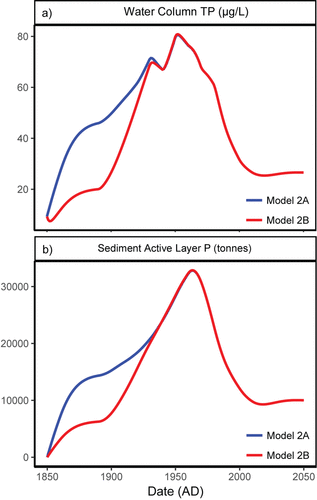Figures & data
Table 1. Lake of the Woods core names, dates, coring locations, depth at core site, and core recovery. Focusing factors are estimated by the flux of unsupported 210Pb to the core site relative to known atmospheric depositional rates in the region (∼0.45 pCi/cm2/yr).
Table 2. Model 1 output where I = B + O, P Inputs (I), P Burial (B), and P Outflow (O) are in tonnes P/yr. P Outflow is estimated from diatom-inferred TP (Reavie et al. Citation2017) multiplied by outflow volume (see ).
Table 3. Model 2 input data, parameters, and data sources.
Figure 1. Downcore profiles for 7 Lake of the Woods cores for total 210Pb activity, date–depth relationship, and sedimentation rate plotted against core depth (cm). Dashed line in 210Pb inventory represents level of supported 210Pb.
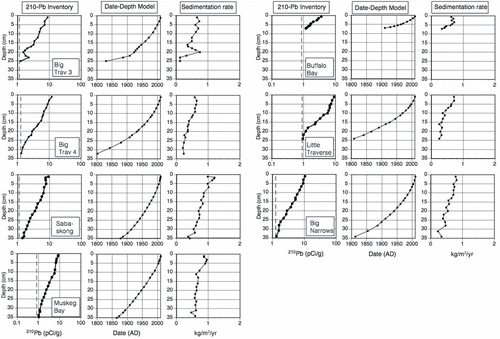
Figure 2. Whole-basin estimates of focus corrected sediment accumulation and diatom-inferred historical water column total P plotted against time period. . Whole-basin estimates of focus corrected sediment accumulation (kg/m2/yr). . Whole-basin estimates of water column diatom-inferred total P (DI-TP; µg/L).
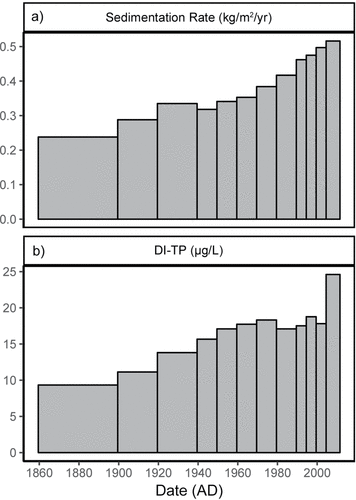
Figure 3. Geochemistry of 7 Lake of the Woods cores including concentration (mg P/g sediment) and flux (mg P/cm2/yr) of total sediment phosphorus and phosphorus fractions including HCl-P, NaOH-P, Organic-P, and Exchangeable-P, and water column diatom-inferred total phosphorus (DI-TP; µg/L) estimates from Reavie et al. (Citation2017) plotted against core date.
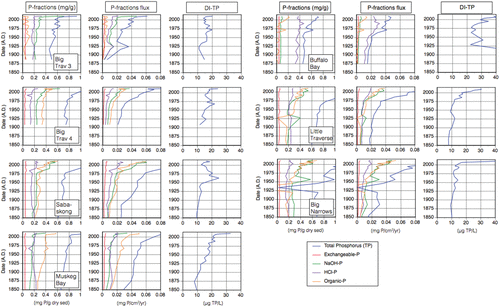
Figure 4. Whole-basin estimates of historical accumulation of phosphorus (P) and P fractions in Lake of the Woods sediments by time period. . Accumulation of P differentiated into refractory components (HCl-P and Organic-P; green bars) and labile components (NaOH-P and Exchangeable-P; yellow bars); minimum burial estimates of refractory fractions were used in Model 2. . Conceptual model of the Active and Buried inventory of P present in 2011 (see text for details).
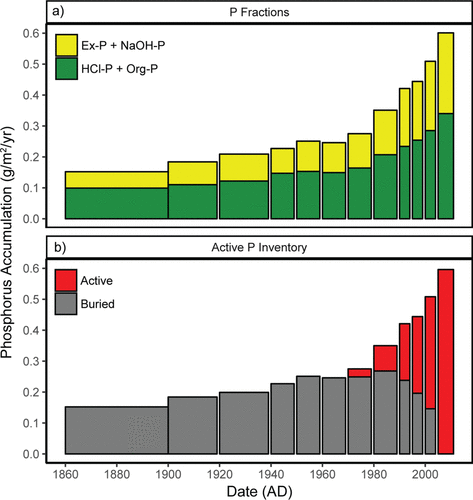
Figure 5. Outflow and P loss at Big Narrows. . Historical flows at Big Narrows for each time period, km3/yr. . Estimates of historical loss of phosphorus through outflow at Big Narrows by time period (lower panel). P loss represents the whole-lake historical diatom-inferred total phosphorus multiplied by historical flows at Big Narrows for each time period.
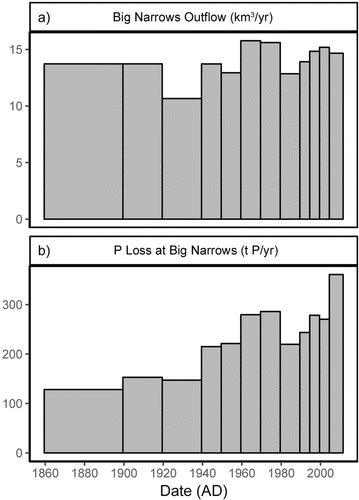
Figure 6. Model 2 is a 3-box dynamic model run from 1850 to 2050. Three inventories of P are estimated including P in the lake (Lake P), Cumulative P in the Active Layer, and Cumulative P in the Buried Layer by adjusting the percent of external P load (EX) that goes to the sediment (% to Sed), the internal load rate (InLoad), and the mass of sediment (MS) that is in the Active Layer.
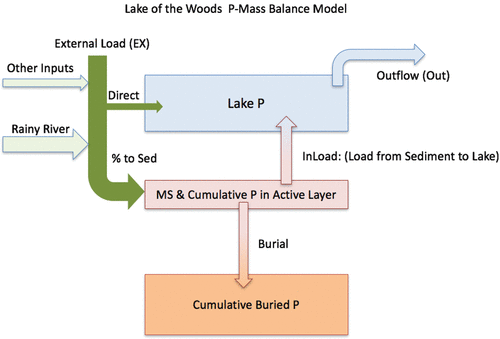
Figure 7. Output of Model 2, 1860–2050. Model 2B (blue line) is based on lower external inputs in presettlement times compared to Model 2A (red line; see text). . Modeled water-column TP (µg/L) peaks in 1950–1960s with rapid water quality improvement after 1960s (blue line). Model 2B delays the rise of TP until 1900 (red line) but has no effect post-1960s. Stable TP levels are reached by 2015–2020 if modern external loads remain constant. . Modeled P in the active layer of Lake of the Woods sediments. The active pool of P was greatest in the 1960s regardless of presettlement external load scenarios, and legacy P has been rapidly reduced since the 1960s. Model output suggests the active pool of sediment P is reaching a stable condition.
